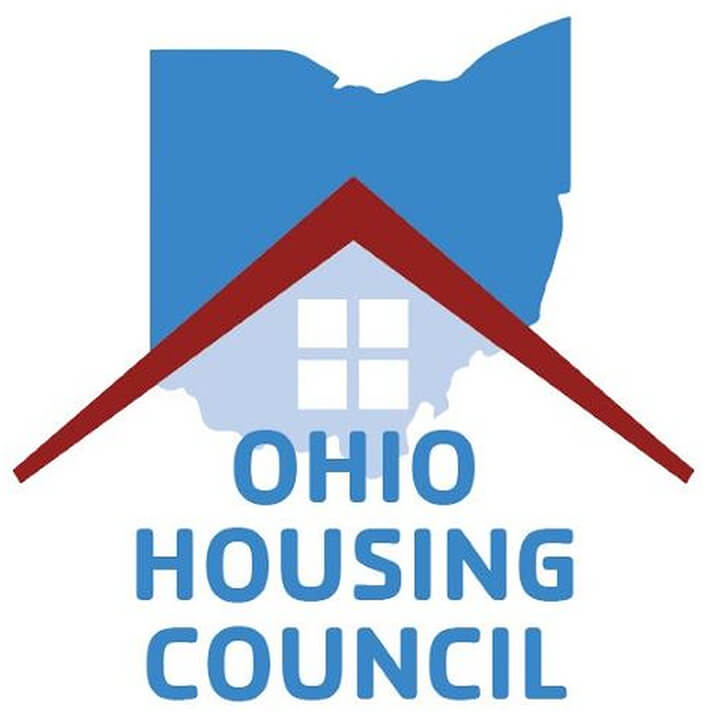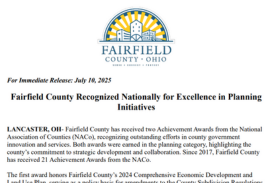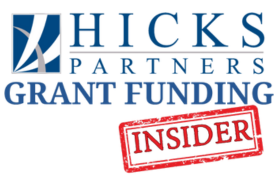Legislative Republicans Push for Veto Override on Property Tax Measure |
|
|---|
|
 |
The Ohio House held a rare summer session to consider overrides of Governor Mike DeWine’s vetoes of property tax related budget provisions impacting both property owners as well as local governments. A veto override requires a three-fifths vote—60 out of 99 House members and 20 of 33 Senators—to be successful. The House anticipated override votes on three provisions: - Eliminating emergency and replacement levies.
- Giving county budget commissions the authority to lower property taxes if they determine too much is being collected.
- Changing how the 20-mill floor—a minimum funding guarantee for public schools—is calculated.
However, the House only voted to override the provision to eliminate emergency and replacement levies. That measure now moves to the Senate for action. Senate leaders have not yet publicly declared if or when they may take up any veto overrides. Governor DeWine vetoed the property tax measures earlier this month, arguing that they could limit revenue for school districts and other local services. Instead, the Governor set up a new working group to examine ways to address property tax concerns without harming schools. He appointed former State Rep. Bill Seitz and Ohio Business Roundtable CEO Pat Tiberi, a former congressman, to lead that effort last week. |
|
|---|
|
 The House action continues the debate over Ohio’s tax policy and the balance between voter-approved levies, property tax relief, and school funding. Regardless of potential action by the Senate, the Governor's new working group will keep property tax issues at the forefront in the coming months. The House action continues the debate over Ohio’s tax policy and the balance between voter-approved levies, property tax relief, and school funding. Regardless of potential action by the Senate, the Governor's new working group will keep property tax issues at the forefront in the coming months. |
|
|---|
|
| Ohio's 2026 Campaign Landscape: Ramaswamy Dominates, Incumbents Build War Chests |
|
|---|
|
 |
Early campaign finance reports reveal robust fundraising activity across Ohio's 2026 election cycle, with significant advantages emerging for incumbents and one standout gubernatorial candidate. U.S. Senator Jon Husted raised nearly $1 million in the recent filing and maintains $2.65 million cash on hand. House incumbents are leveraging their positions effectively: - 9th District: Rep. Marcy Kaptur (D) raised $412,400 with $941,000 cash in the bank.
- 13th District: Rep. Emilia Sykes (D) outpaced her likely opponent, former GOP State Rep. Kevin Coughlin, $523,800 to $302,000, maintaining a $619,400 to $331,900 cash advantage
- 15th District: Rep. Mike Carey (R) showed considerable strength with $788,300 raised and over $1 million available
- 14th District: Rep. Dave Joyce (R) added $194,800 to his commanding $3 million war chest
Republican gubernatorial candidate Vivek Ramaswamy has shattered previous records with $9.7 million raised since February from over 40,000 donors—notably without personal contributions or loans to his campaign. The haul eclipses comparable periods for former Senator Sherrod Brown ($7.2 million) and Governor Mike DeWine ($3.1 million), while significantly outpacing Democratic challenger Amy Acton's $600,000. |
|
|---|
|
 These early numbers underscore the advantages of incumbency and established networks. Ramaswamy's unprecedented fundraising, combined with President Trump's endorsement and cleared primary field, positions him to focus resources on general election messaging rather than primary survival, a strategic advantage that could prove decisive in 2026. These early numbers underscore the advantages of incumbency and established networks. Ramaswamy's unprecedented fundraising, combined with President Trump's endorsement and cleared primary field, positions him to focus resources on general election messaging rather than primary survival, a strategic advantage that could prove decisive in 2026. |
|
|---|
|
Fairfield County Recognized for Planning Excellence |
|
|---|
|
Fairfield County earned two Achievement Awards from the National Association of Counties (NACo) for outstanding planning initiatives, bringing their total NACo recognitions to 21 since 2017. The first award recognizes the county's 2024 Comprehensive Economic Development and Land Use Plan. The strategic blueprint outlines subdivision regulation amendments, zoning code updates, and targeted growth management investments. The plan positions smaller communities to pursue competitive funding opportunities while establishing Fairfield County as a Central Ohio smart planning leader. The second award is for the county's Grant Writing Support for Local Communities initiative—a collaborative effort with Hicks Partners that provided grant strategy to villages and townships. The partnership has generated over $3.3 million in funding across 30+ local communities and agencies, expanding beyond initial scope to include additional county departments. |
|
|---|
|
 Fairfield County’s dual NACo awards underscore the power of data-driven planning combined with community-centered grant support. By aligning policy goals with proactive funding strategies, the county creates a virtuous cycle—where strategic vision attracts resources, and those resources, in turn, fuel necessary projects freeing up tax revenue for other necessary government activity. Fairfield County’s dual NACo awards underscore the power of data-driven planning combined with community-centered grant support. By aligning policy goals with proactive funding strategies, the county creates a virtuous cycle—where strategic vision attracts resources, and those resources, in turn, fuel necessary projects freeing up tax revenue for other necessary government activity. |
|
|---|
|
Data Center Power Demands Drive Energy Debate |
|
|---|
|
 |
Governor Mike DeWine's veto of the legislature's attempt to eliminate the data center sales tax exemption preserves a $127 million annual incentive while spotlighting growing concerns over energy infrastructure capacity. The exemption, established in 2013, has attracted over $40 billion in private investment from Amazon, Google, Meta, Microsoft, and others. Ohio's data center boom has outpaced regional competitors: - 180 data centers operate in Ohio—significantly more than Indiana (69), Michigan (52), or Kentucky (36)
- 11,791 jobs supported statewide by data centers in 2024
- Power demands now exceeding utility infrastructure capabilities across multiple regions
Legislative discussions increasingly center on energy consumption requirements as data centers demand massive electrical capacity that aging grid systems cannot accommodate. Traditional utility interconnection processes create bottlenecks that delay critical business operations, forcing operators to deploy on-site power solutions including natural gas, solar, batteries, and hybrid microgrids. The tension between economic development and infrastructure costs has prompted lawmakers to examine mechanisms to protect existing ratepayers while supporting continued investment. Recent legislative hearings have focused on behind-the-meter power generation for data centers and/or requiring data centers to fund grid upgrades rather than socializing costs across all utility customers. |
|
|---|
|
 Ohio's energy policy framework faces a critical inflection point where economic development incentives must align with infrastructure realities. DeWine's veto demonstrates executive commitment to maintaining competitiveness, but the underlying power supply constraints require ongoing attention. Ohio's energy policy framework faces a critical inflection point where economic development incentives must align with infrastructure realities. DeWine's veto demonstrates executive commitment to maintaining competitiveness, but the underlying power supply constraints require ongoing attention. |
|
|---|
|
Our Grant Alert list is updated! Review the list of ongoing grant opportunities here: |
|
|---|
|
| |
|







